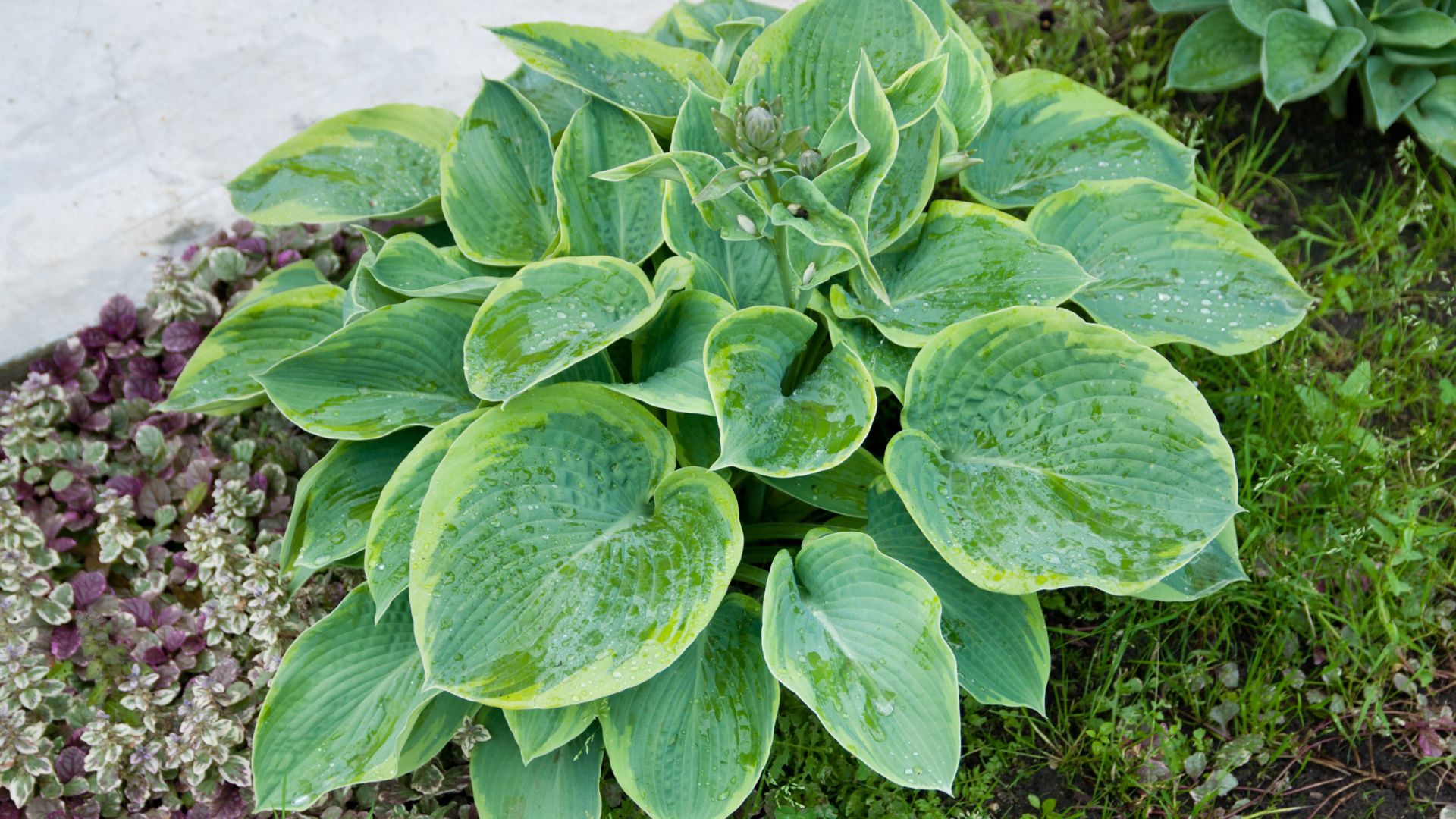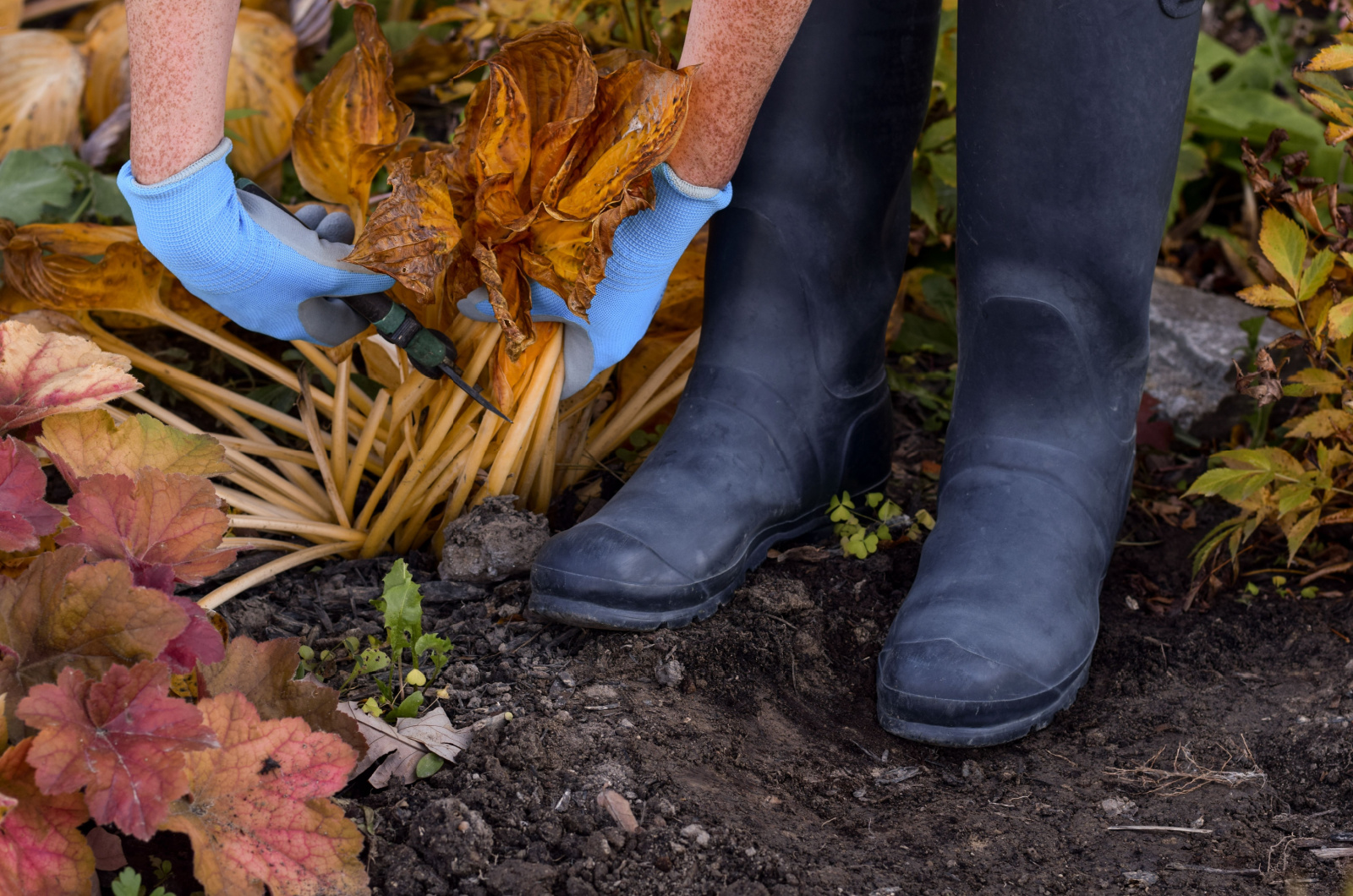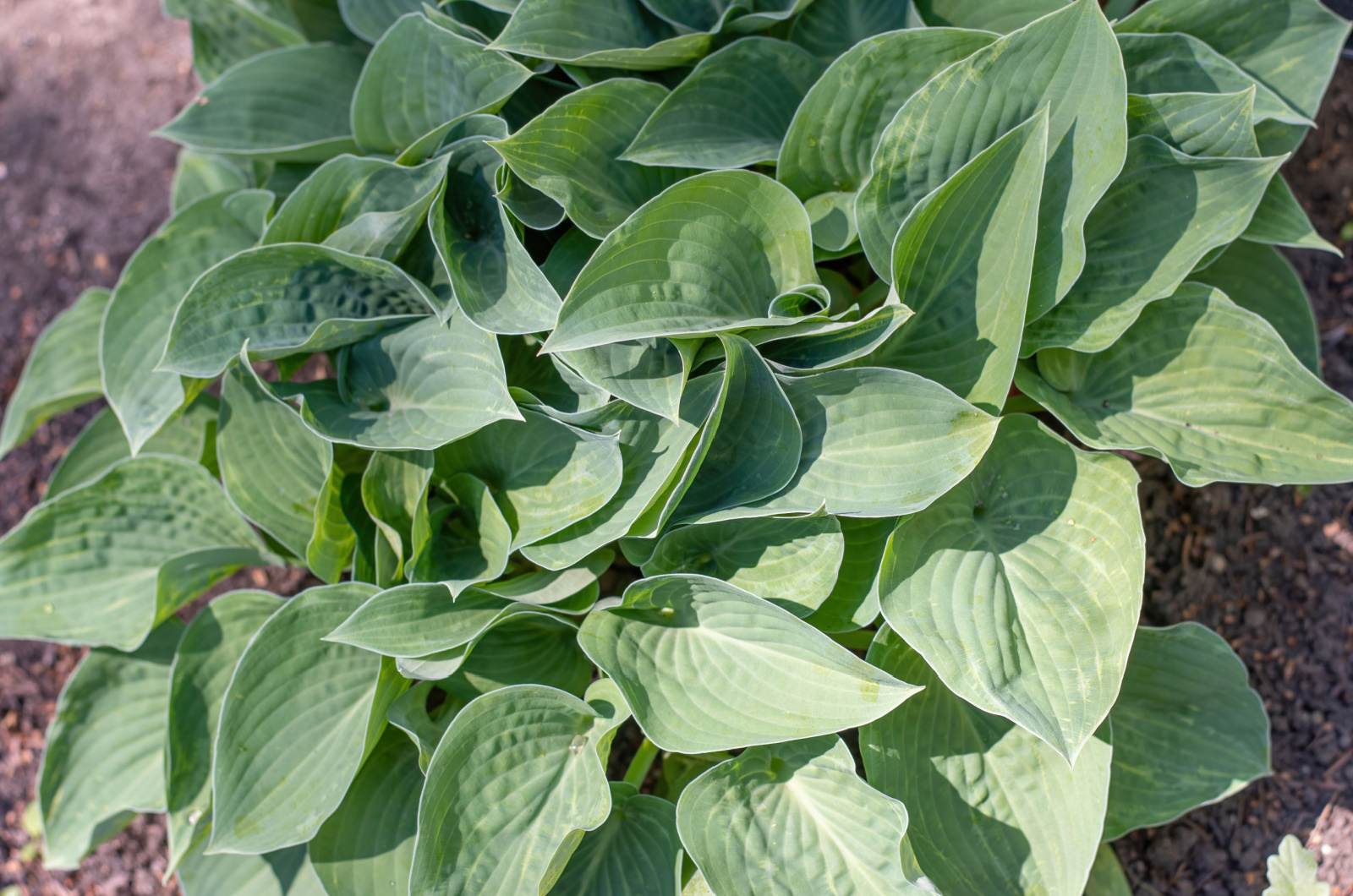Hostas are always an excellent choice for landscapes because of their massive green foliage. But as soon as the temperatures drop significantly, hostas start losing their original colors, which is a completely normal thing and part of their life cycle.
Many gardeners ask themselves if they should do anything to their hostas and if the plants can go through winter with dead foliage. Additionally, what about the soil and winter protection?!
In this article, I’ll answer all these questions and show you what to do with hostas before winter. Additionally, I’ll show you one thing you should never do to your hostas at this time.
Let’s get started!
1. Cut Down Your Hostas
Hosta leaves turn yellow as soon as the fall arrives and that’s generally a completely normal and expected occurrence. But as time passes, the leaves start dying back and the plant looks anything but visually appealing.
Some growers may suggest leaving the plant in such a condition but is this really a good approach? The answer is definitely no, and you should cut down your hostas before winter.
The main reason why we should do this isn’t to remove unsightly looks but rather to protect the plant from potential issues.
For instance, various pest species adore decaying plant foliage and can’t resist feeding on hosta leaves. Apart from food, decaying foliage also ensures an excellent shelter for insects during cold winter months.
Now, you must be wondering why it’s a problem since these creatures die off in cool temperatures. Well, they may die but their eggs remain and they’ll hatch as soon as the temperatures rise the next season.
Unfortunately, the story doesn’t end there; mold, mildew, and various other infections may develop in such conditions. And worst of all, many pathogens can overwinter and they’ll attack new growth the following season.
How To Cut Back Hosta Leaves
Luckily, this isn’t a hard task and it doesn’t require any special equipment or skill. A pair of garden scissors or a hedge trimmer will do wonders!
All you need to do is slide the blades under limp leaves and remove them. The bottom part of the plant will be clearly visible so you can do the other tasks easier.
There’s no need to discard the foliage you remove from your hostas. The best way to use hosta leaves after cutting is to add them to your compost pile. If your hostas were healthy, i.e., not infected or infested, the leaves will definitely improve your compost.
They decay quickly, boost the nutrient levels in your compost, and many plants will benefit from it the next season.
2. Add A Layer Of Mulch
Another thing you should do to these shade-loving perennials is add a layer of mulch over the soil. Many gardeners aren’t aware of the benefits of mulching for plants, not only hostas.
You can protect your hostas during the cold winter months by adding a 3-inch layer of mulch over the soil.
The thing is that the roots of these plants aren’t susceptible to frost damage. However, the problem arises when the soil freezes and thaws repeatedly and that definitely affects the roots. The only way to prevent this is to mulch your hostas.
And that’s not the only benefit of this layer for hosta plants. As you may know, this material regulates moisture in the soil and prevents weed development. Weeds are definitely one thing every gardener hates, so mulch to reduce your chores!
There are various materials you can use as mulch, such as shredded bark or shredded leaves.
All you need to do is take some mulch and place it around the hosta crowns.
Avoid Fertilization
We’ve seen which tasks will help your hostas thrive the next season but there’s one thing you should never do: fertilize hostas before winter!
The reason is pretty simple; fertilizers help plants develop further, so if you feed your hostas in fall, they’ll display new growth. But that’s not good because freezing temperatures will damage any plant portion above the soil line.
You should let your hostas enter dormancy and rest during the cooler months. Remember how much energy the plant needs to grow over the season!
Spring is the best time to feed these perennials. By applying all-purpose general fertilizer at the beginning of the growing season, you’ll encourage the plants to produce new and healthy growth.
That’s it! Cutting down your hostas and adding a layer of mulch will keep your plants protected during winter. As soon as spring arrives, the plants will wake up and reward you with their large, beautiful foliage!




